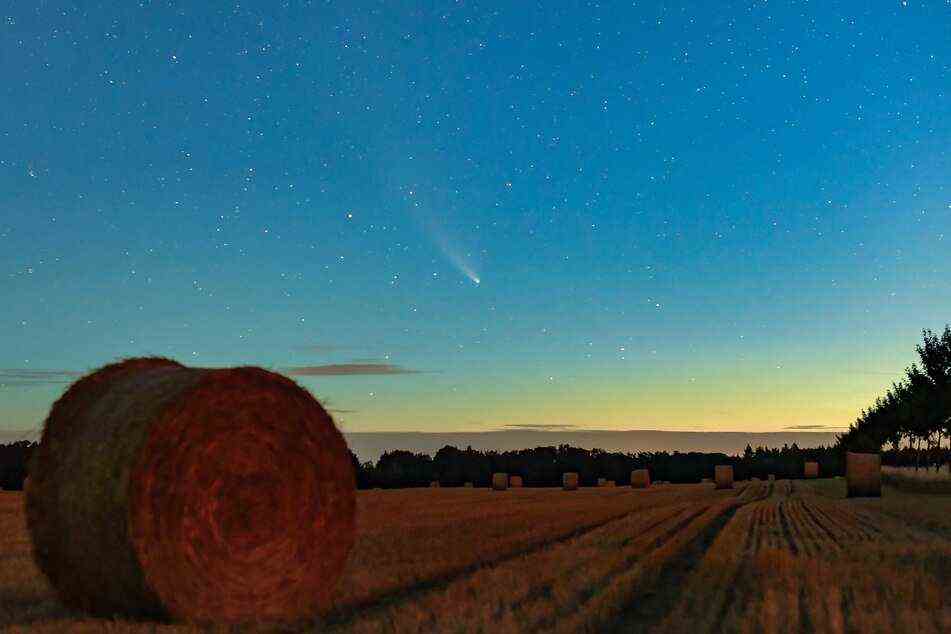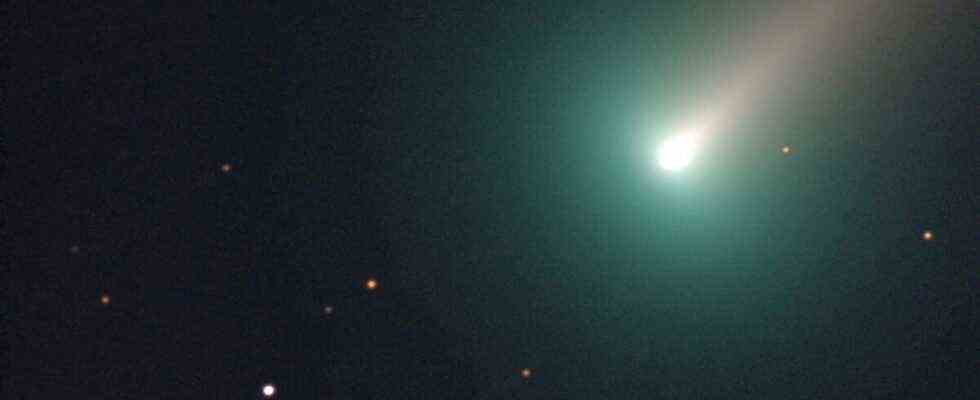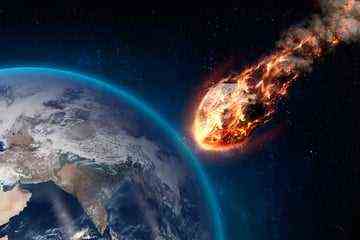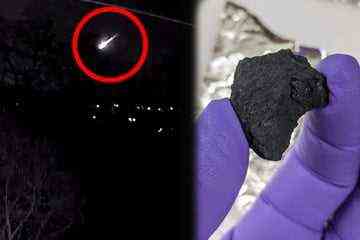Spectacular event: This is how you can see comet “C / 2021 A1 Leonard” in the sky
Germany – The coming days could be a spectacle for onlookers and stargazers. A comet and hundreds, burning up in the atmosphere Meteors are expected in the night and morning sky over Germany.
This image of comet “C / 2021 A1 Leonard” was taken with the new 60 cm telescope at the Bayfordbury Observatory at Hertfordshire University. © University of Hertfordshire / dpa
Comet “C / 2021 A1 Leonard” will reach its closest point to earth at a distance of 34 million kilometers on Sunday morning and could possibly even be recognized with the naked eye if the sky is clear if the weather and dawn play along.
In the days that follow, the Geminids’ meteors will burn up and appear in the hundreds in the sky during the night. The high point is expected for Tuesday night, said chairwoman of the Sternfreunde Association, Sven Melchert, of the German press agency.
Comet “Leonard” will be best seen on the eastern horizon on Sunday morning between six and seven o’clock, when dawn and the rising sun do not interfere. “This tail star won’t make for a bright spectacle,” they say Star friends. But it should be easy to spot with binoculars or a telescope.
But according to the German Meteorological Service in Offenbach, there is probably only a few regions in Germany where there is a chance of a glance. A DWD spokesman said a warm front with precipitation from the west during the night. “A lot of clouds are coming in. Perhaps the highest chances are in the Allgäu, in the Alps or in Eastern Saxony.”
“This visit to Comet Leonard is not a bright celestial event, but it will be the only one for us,” said the astronomical friends. After circling the sun in a wide arc, the celestial body will disappear into the vastness of space and never return to the solar system.
“C / 2021 A1 Leonard” was the first comet discovered this year on January 3rd. He was spotted by Gregory J. Leonard at the Mount Lemmon Observatory in the US state of Arizona.
Comets come from the early days of our solar system

Was seen over Germany in 2020: Comet Neowise, also called “C / 2020 F3”. © Patrick Pleul / dpa-Zentralbild / dpa
Comets are billions of years old and originate from the early days of our solar system. They consist of a mixture of ice, dust and rock. When a comet approaches the sun, its core, usually only a few kilometers in size, begins to evaporate and forms a dense cloud of dust and gas. The comet’s tail emerges later.
The Geminids, named after the constellation Gemini, could be a spectacle. “With 150 meteors per hour, the Geminids are the richest river of the year,” said Melchert. The climax is expected in the night of December 14th. However, the waxing moon does not set until after midnight, so that in the morning most of the glowing meteors will be visible, if that is weather plays along.
The DWD does not want to make any real forecast here. Forecasts would see clouds and possibly fog as well. The spokesman said the greatest opportunities might still be in the high altitudes of the Black Forest or the Alps.
According to Sternfreunde, if you want a chance at the shooting stars, you have to look east in the evening. The constellation Gemini – from which the Geminids seem to arise – will then over the course of the night over the south and in the morning in the northwest. According to the association, the twins already rise in the evening hours in the eastern sky, so be with us all night Shooting stars to be expected, even in the days after December 14th.
The fact that the meteors arise from the constellation Gemini is of course only a perspective effect, according to the astronomical friends. The reason for their occurrence is that the earth is traversing a cosmic cloud of dust. This presumably comes from the minor planet Phaethon, which may have broken and left debris behind.
When they penetrate into the earth’s atmosphere, they burn up and can be seen as falling stars in the sky.
Cover photo: University of Hertfordshire / dpa



